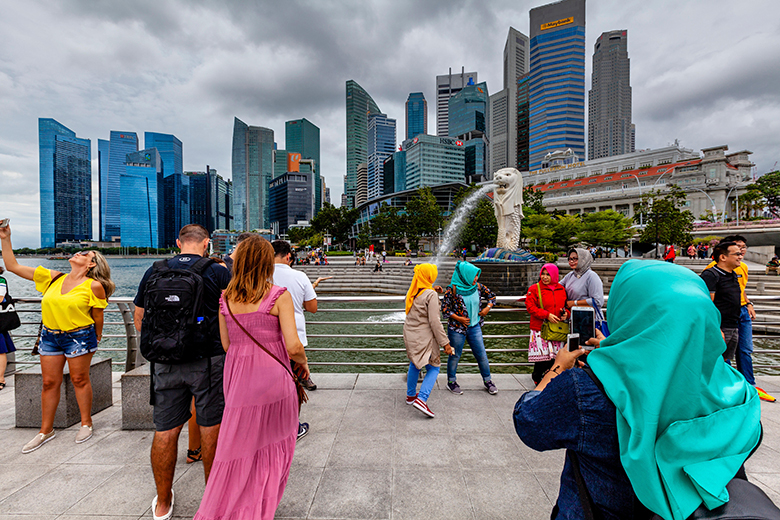As the “big four” anglophone countries clamp down on international student recruitment amid concerns about their local impact, many of the Asian source countries of those students are making plays to become significant host countries in their own rights.
India wants 500,000 students by 2047 and has recently approved more than 15 foreign campuses. South Korea recently surpassed its target of 305,000 by 2027. Other Western institutions are expanding into countries including Sri Lanka, China and Indonesia. Hong Kong has recently increased the number of international students universities are permitted to enrol, in response to turbulence in the US. And the likes of Vietnam, Malaysia, South Korea and Taiwan are also ramping up efforts to attract more international students.
Amid this buzz of activity, one nation appears to be an outlier: Singapore.
The city state, often dubbed a bridge between East and West, has long been a bastion of internationalisation, hosting foreign universities, international students and many international staff – not to mention numerous global companies. Yet it has had little to say on international students since the demise of the Global Schoolhouse Project, an initiative launched in 2002 that aimed to enrol 150,000 international students by 2015. That target was missed and the programme was kicked into the long grass, with even higher education academics in the country unsure whether it was officially retired.
Government spending on international students fell during the 2010s, and recent data from StudyPortals shows that global demand for study in Singapore fell during the year ending June 2025, with a 17 per cent reduction at bachelor’s level and a 15.4 per cent reduction at master’s level compared with the previous 12 months. In the same time period, increased international demand for at least one level of study was reported by Japan, China, Malaysia, India, Taiwan, Hong Kong, the Philippines, Indonesia, Vietnam, Nepal and Pakistan.
Some put this down to the same debates about the pros and cons of immigration that are pervasive in the West.
“There are tensions surrounding the attraction of talent from overseas, especially given Singapore’s relatively small population base,” said Ja Ian Chong, associate professor of political science at the National University of Singapore (NUS). Calibrating the right mix is “a constantly moving target that is difficult to predict,” he continued.
Currently, foreign students make up about 10 per cent of total undergraduate intake across Singapore’s seven public universities. More detailed statistics are hard to come by. Unlike many other host countries, the government does not release data disaggregating student numbers by nationality.
“It is unlikely that the government will seek to increase the intake of international students as this would reduce places for local students given capacity constraints, which would not go down well with locals,” said Terence Ho, adjunct associate professor at NUS’ Lee Kuan Yew School of Public Policy.
Part of the issue is that, unlike in many other emerging destinations, Singaporean taxes contribute towards the education of incoming international students, who are permitted to apply for a limited number of government-subsidised places at public universities.
At NUS for example, a Singapore citizen would pay S$9,650 (£5,650) a year for an undergraduate business course, while a non-ASEAN subsidised international student would pay S$22,100: nearly S$11,000 less than the full fee for non-subsidised students, S$33,050. The most expensive courses, such as medicine and dentistry, can cost upwards of $S180,000.
International students who receive the subsidy are required to stay and work in Singapore for three years after graduation. “The main idea is to attract international students to not only study but also to work in Singapore…upon graduation,” said Jason Tan, associate professor at the Nanyang Technological University (NTU) National Institute of Education. “But, at the same time, there’s also political pressure on the government of Singapore to differentiate between citizens and non-citizens.”
Neither the total number of subsidies for international students nor the allocation given to each university is made public but, in 2019, the education minister at the time was forced to answer questions about government spending on foreign students. He reassured policymakers that the education budget was “overwhelmingly” spent on local students. He also said that annual government spending on scholarships and tuition grants for foreign students had fallen by about 50 per cent over the previous decade.
As well as grappling with concerns about public sentiment, Singaporean universities have less of an economic imperative to recruit foreign students than exists in other study destinations.
“Singapore’s approach to attracting international students is strategic and selective, rather than expansive,” said Yi’En Cheng, a lecturer at NUS College. While in some countries “international student tuition fee contributes significantly to the economy, Singapore’s universities do not depend as much on them and, hence, take a more measured approach, whereby international student flow is carefully managed to align with national goals, such as that of social integration and national identity-making.”
However, beyond finances, internationalisation is key to Singapore’s future in other ways. “Singapore’s development has historically relied on its pivotal geographic location and extensive international engagement,” said Jack Lee, senior lecturer in higher education at the University of Glasgow – and that is unlikely to change any time soon. Moreover, the city state’s ageing population and declining birthrate make recruiting international students even more important for workforce capacity and national development.






